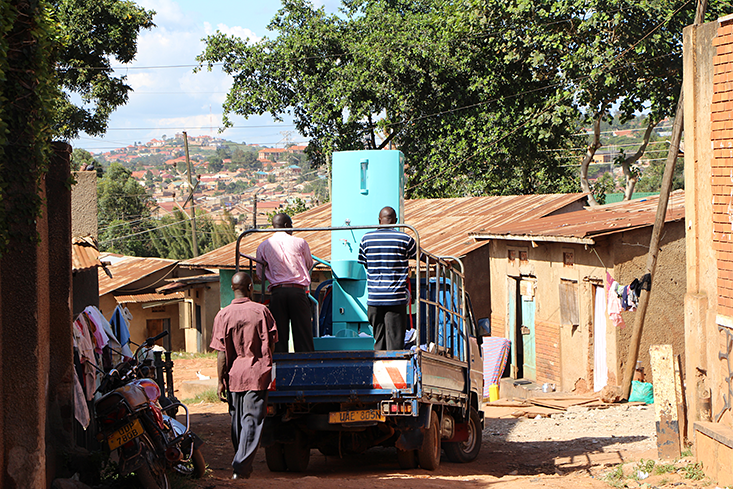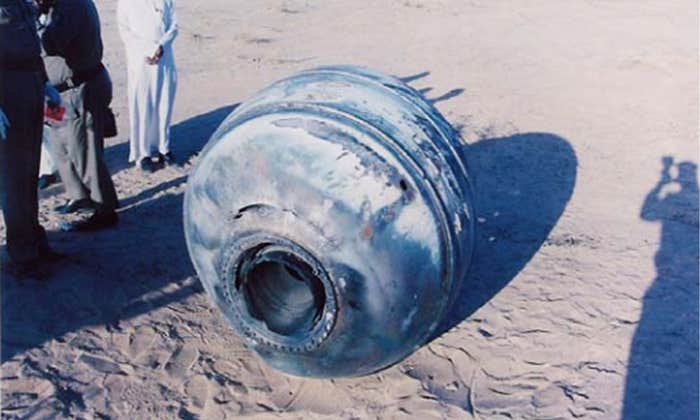Our humble toilet has shaped civilization. Starting in 19th-century Britain, it spread throughout the industrialized world, eliminated recurring cholera epidemics, and contributed to the doubling of lifespans. But its spread was not universal. Dozens of countries could not afford to build the sewer system that toilets rely on, leaving a present-day 2.5 billion people subject to preventable plagues considered history in the industrialized world. Every year, this sewage shortcoming translates into the deaths of about 1.5 million children under 5 from diarrheal diseases. Annually, 100,000 people die from cholera.
Efforts to invest in sewer systems have stalled in several low-income nations, and now there is a growing sentiment that the answer to today’s sanitation dilemmas should not rely on today’s toilets anyway. Like mobile phones that have bypassed the need for a cabled telephone infrastructure, some engineers, designers, and humanitarian workers argue not for better sewage systems, but for smarter toilets. The future toilet, they say, must be self-contained.
To understand the sanitation situation in the developing world today, some look back to the Victorian era when the toilet first grew in popularity. As cities expanded, people in slums were lucky to have shared pits in their backyards. They didn’t know that those privies could be the source of disease, but they were clearly the source of a lot of discomfort. Flush toilets took off in Britain because they were much less smelly. Much like today, early flush toilets used water to rinse waste out of the basin through a pipe shaped like a sideways s. Water remaining in the pipe’s curve sealed it, preventing odors from wafting up from the cesspit below.
Early toilets succeeded in eliminating the immediate stench, but little thought was given to where the waste would go, says historian David Eveleigh, author of the 2009 book Privies and Water Closets. Over time, water from growing numbers of poorly managed flush toilets stressed cesspits and caused overflows. Raw sewage seeped into wells or flowed into streets and rivers. So many people were sending their excrement into the Thames that the stench shut down Parliament in 1858 and practically forced legislators to fund a sewer system. It took nearly six decades to reach all Britons.
Developing countries have long been at a comparable moment, with waste polluting rivers or the surrounding grounds. But the answer to those problems isn’t the same as it was for Britain back in the 19th century. The challenge innovators now face is how to collect and sanitize waste more efficiently than their Victorian predecessors, without relying on a sewage system. “We can’t wait for people to be rich,” so that their governments can afford sewage systems, explains Doulaye Koné, a program officer for sanitation technologies and tools at the Bill & Melinda Gates Foundation, which has been passing out grants as part of its Reinvent the Toilet Challenge.
Some engineers, designers, and humanitarian workers argue not for better sewage systems, but for smarter toilets.
Four teams that won the challenge’s first round took home $240,000 in grants last year. However, it’s not yet clear which—if any—of their toilets will seed the second sanitation revolution. In fact, Koné doesn’t expect a single winner. He imagines several unique variations on the self-contained theme, suited to the needs of environments ranging from humid slums to arid refugee camps. “We’re not trying to get one solution that fits all,” he says, “but a series of toilets which can meet the needs of different categories of consumers.”
One winner of Gates funds is a team led by engineers from the Swiss Federal Institute of Aquatic Science and Technology (Eawag). Their approach incorporates a classic element of pre-sewage design: pail-collection systems. In the 1870s, people in the town of Rochdale, England pooped in standardized “night soil” pails. Horse-drawn vans picked them up and replaced them with sanitized ones. At its peak, the system consisted of 7,504 pails. The dung was put into a trench and eventually sold for use on fields.
This plan didn’t come without some Dickensian stench, which made flush toilets and sewers more attractive. Fortunately, the Eawag engineers seem to have solved the problem of the stink with the addition of a system to recycle water through their plastic blue toilets, which were designed by industrial design firm EOOS. They’re more daunted, however, by another challenge that also confronted people of Rochdale: Profits from manure-based fertilizer did not make up for the costs of manual collection. The team argues that the situation could work this time if users rent the toilets, paying a small fee to the toilet owners to service and empty them twice a week. The business owners would then take the contents to a central processing plant where the waste could be turned into a sellable product. The better the product, says Harald Gründl, lead designer at EOOS, the more likely the scheme would work.

One promising technology that the plants could use to make a high-quality product comes from a different Gates-funded sanitation initiative, led by Eawag process engineer Kai Udert. “Urine has most of the nutrients that we excrete,” Udert says, including nitrogen, phosphorus, potassium, and sulphur. But urine naturally loses its nitrogen in the form of ammonia gas—the chemical that makes it stink after sitting around a while. Udert’s team stabilizes urine by harnessing naturally occurring bacteria to oxidize ammonia to nitrate. Then they concentrate urine’s original nutrients by distilling it in an evaporation reactor that removes up to 97 percent of the water to create a potent fertilizer.
Another means to convert garbage to gold came from the winning team from the Reinvent the Toilet Fair, led by engineers from the California Institute of Technology. It uses a plain old flush toilet connected to a mobile wastewater processing plant. After flushing, the solids settle to the bottom of a collection tank, and the liquids get treated by the electrolysis of water, which splits it into oxygen and hydrogen. Specifically, the liquid flows to an electrochemical reactor, which shoots a solar-powered electrical current through it. The electrochemical reaction converts the chloride in the urine to chlorine, turning the liquid into a bleach-like solution that kills microorganisms and neutralizes other pollutants. Then the disinfected liquid gets filtered and can flush through the toilet again or can be used for irrigation. At the opposite electrode, a simple stainless steel plate, the electrochemical process makes hydrogen gas, which could be stored in a fuel cell or used for cooking, much like propane.
At the moment, the price of these high-tech solutions prevents them from reaching the developing world. The Caltech toilets, for example, with their solar panels and electrochemical reactors, will cost about $2,000 each to manufacture. In places where people live on less than $2 per day, that price will not do. Therefore, the success of the sanitation revolution also depends on the willingness of industries to partner with inventors to bring manufacturing costs down. Innovators are hopeful about these partnerships, however, because the market is waiting. Cities in countries with emerging economies are growing rapidly, which means the demand for sanitation in slums is immense.
While high-tech solutions blossom, some simple inventions have already hit the ground. For example, Swedish nonprofit Peepoople introduced cheap biodegradable bags that sanitize waste, called Peepoos, to a large slum in the Nairobi area of Kenya. They had found that two-thirds of people in slums use “flying toilets”—plastic bags flung as far away as possible. With the Peepoo bags, people can recover about a third of the cost of the bag by turning used ones over to a treatment plant that converts the contents to fertilizer. Since 2009, when the nonprofit got funding for implementation in Nairobi, the system has grown to serve 3,000 customers and 10,000 children in schools daily.
The Peepoo bag is simple, cheap, and flexible, and many in the field think it is the way to go. But the Gates Foundation isn’t after incremental improvements, explains Koné. It aims to generate “leapfrog” solutions that would allow the developing world to bypass the sewer and deliver something better. Koné wants to see the toilet equivalent of cell phones. “I was in Burkina [Faso] in 1996 and I couldn’t get a landline,” Koné says. But with the invention of the mobile phone, “suddenly, there’s more people with cell phones than people with toilets,” he says. That’s not an exaggeration: According to a recent study, some 6 billion of the world’s 7 billion people have access to mobile phones, while only 4.5 billion have access to toilets or latrines.
Cell phones have transformed communication, banking, and even healthcare in ways that were unimaginable 20 years ago. Yet tomorrow’s toilets have the potential to be even more revolutionary. Not only could they save millions of lives through improved sanitation, but, as World Toilet Organization founder Jack Sim has said, better health will lead to better prosperity. This year the United Nations adopted the WTO’s November 19th holiday, World Toilet Day. Admittedly, the holiday seems superfluous at best. But its purpose was not lost on the UN. It’s a call to innovators to march into the future.
Chelsea Wald is a freelance science writer who contributes to Science and New Scientist. She migrates between the United States and Austria.




























